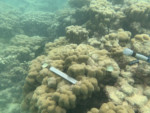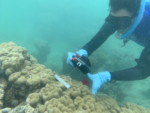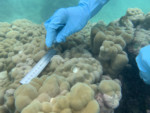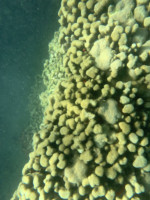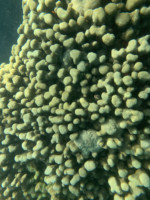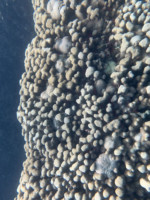During this mission in Hawaii, we are focused on collecting samples particularly from two species of tropical Scleractinian (stony) corals that show abnormal growths:
- Porites evermanni (common name lobe corals) (massive)
- Porites compressa (common name finger corals) (branching)
Stony corals are the world’s primary reef builders. Reef building corals are only found in shallow, tropical and sub-tropical waters because the algae that they are in symbiosis with need light for photosynthesis and temperatures ranging from 70-85 degrees Fahrenheit.
Reefs play a crucial role in protecting shorelines from storms and surge water and help prevent shore erosion. Reefs are vital to the global economy with an estimated value of 172 billion US Dollars annually providing food, protection, tourism jobs and shoreline protection.
Hawaii does not have many coral species and only five species here are main reef builders. Because of this, and because coral health is imperative to marine life, understanding why these corals are showing abnormal growths, and how they are fighting the disease (or not) is incredibly important.
The growths (abnormal cell reproduction) look different on the two species.
On the Porites evermanni there is a pink pigment that is produced by the coral as a protection of something that is invasive. We see the pigment coming later (not in the initial growth). This reaction tells us the coral is fighting something invasive.
On the Porites compressa, the growths are clearly distinguishable from the healthy coral as shown in the photo below. The P. compressa is a braching coral, meaning it grows in finger like shapes, but when the abnormal growths are present, they grow in massive formations, making it easy to see the disease.
